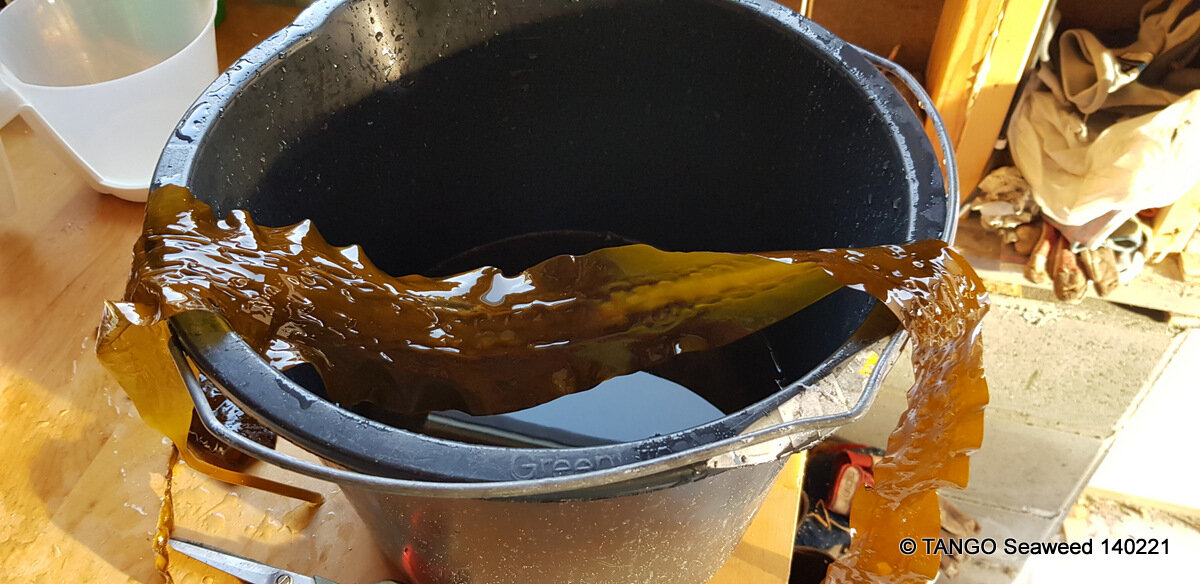Refreshing our Seed Cultures with New Seaweed Parents
Collecting new parent kelps in the beautiful underwater forests at Runde, photo © Marko Polter
Since 2017, our farmed seaweeds at Skarveskjæret have originated from a single collection of fertile kelps in our region. Now it was time for re-juvenation of parental material, and we selected healthy new sugar kelps at Runde during glorious winter weather above and below water.
Farming seaweed – when done in the right way – is environmentally positive. One important aspect is the integrity of the surrounding ecosystem, which is why we only grow species and ecotypes which naturally belong here. The production of ‘seeds’ – minute reproductive stages of our kelps – is carried out by our partners, Hortimare, in the Netherlands. We collect adult (and if possible fertile) seaweed ‘parents’ in our region and send them to their laboratory. Hortimare staff then develop and keep cultures of the small seaweed offspring – with individuals just fractions of a millimetre in size (but lots of them).
Come fall and seeding season, we order the amount of reproductive material necessary to seed the amount of ropes in our farm. In October/November, we get a delivery of our TANGO-seedlings while cultures stocks are kept continually at Hortimare.
After four years of using the same original parental material for our two species of kelps, it was time to refresh the cultures, send new material and in that way reduce the risk of inbreeding over time.
Ready to go? Happy Helpers!, photo © Saskia Mulder
With the help of an enthusiastic gang of free divers and after some exploratory trips to the kelp forests around us, we found the most beautiful, clean and luscious sugar kelps at Runde. Although we missed the season for finding mature material (with reproductive cells called ‘spores’ present), we can rely on Hortimare to induce fertility in the lab, so that chances are good we will be able to seed TANGO-kelps from Runde in our farm later this year.
Beautiful, clean and luscious sugar kelps occur in places which are somewhat protected from the most exposed waves., photo © TANGO Seaweed
This sugar kelp shows previously fertile sections at the tip, where spores had devloped, but which have been emptied. photo © TANGO Seaweed
These are the ones we want, right? photo © Marko Polter
Amidst the kelp forest with all its diversity. photo © TANGO Seaweed
It’s easy to get distracted by all other marine life catching our attention - here a beautiful jellyfish, Aequorea vitrina, photo © TANGO Seaweed
Finally, kelps are rinsed and carefully packed for express shipment to the Netherlands.










